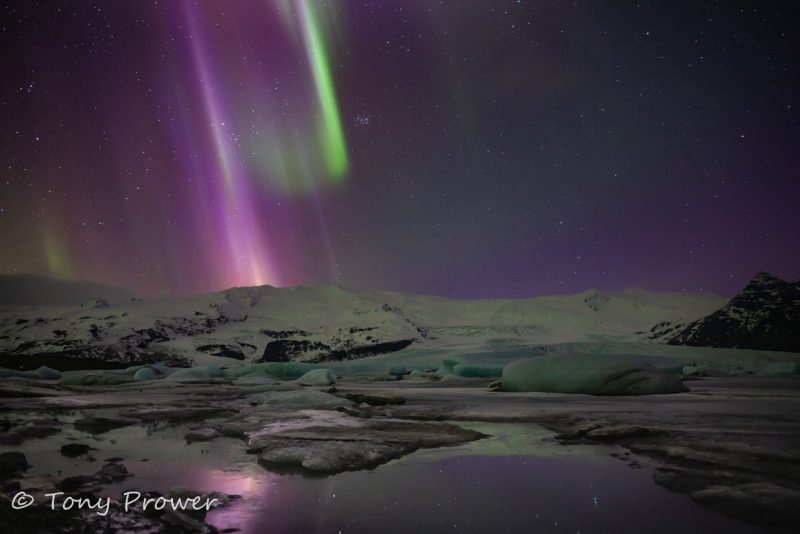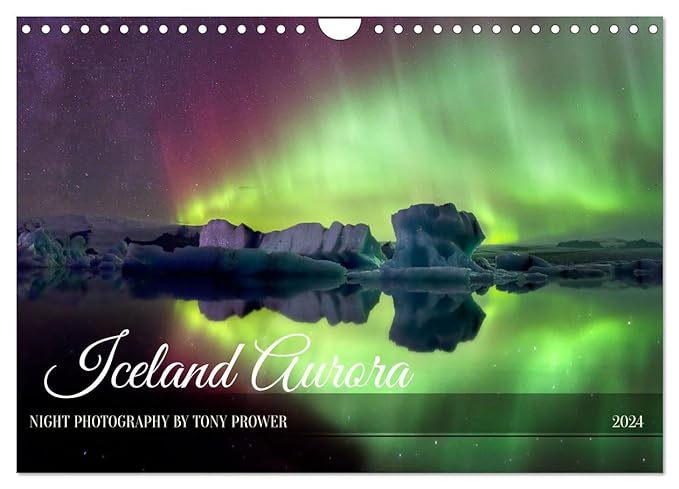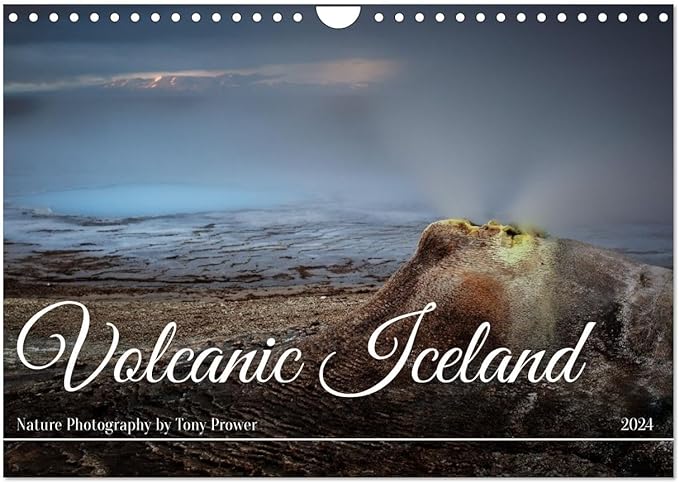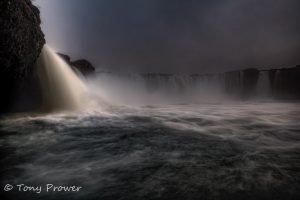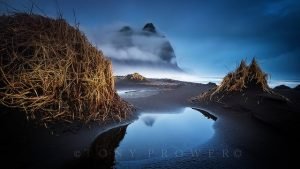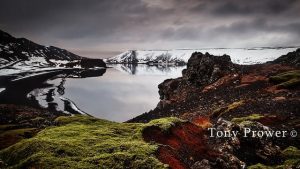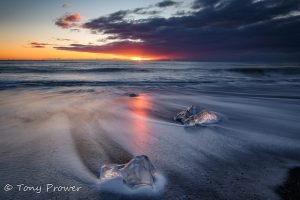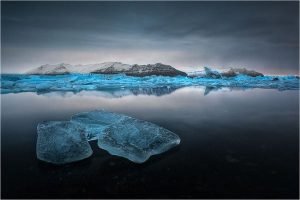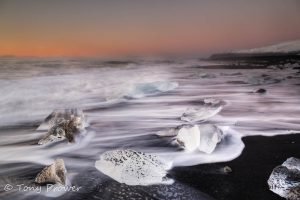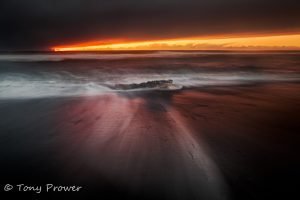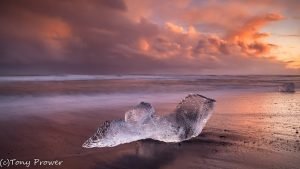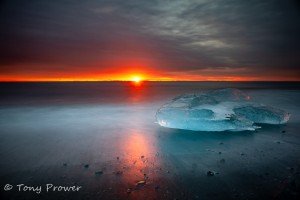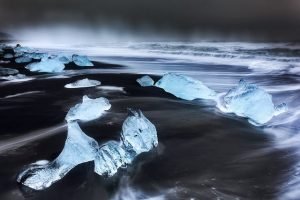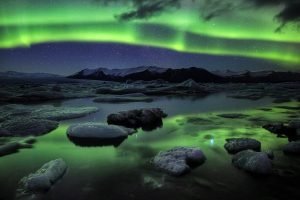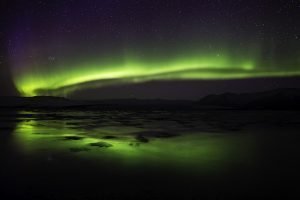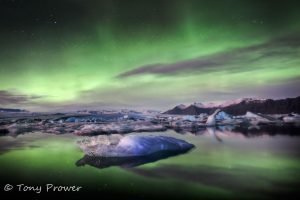Star-scape Lenses
This article tracks an email conversation between me and Chip Porter of www.chipporteralaska.com. I thought it was useful to share because it gives a little inside into camera lenses. We talk about some wide angle lenses for Canon DSLRs. The concept of ‘Coma’ is raised as a test of high end lenses with large apertures. This conversation led us both to buy new lenses and improving the quality of our night photography.
Private Northern Lights Tours
CHIP:
16-35 canon lens
Hi Tony
Quick question. I’ve noticed in a couple of your wide angle night shots the stars distort on the outer edges. I have the same problem with my Canon 16-35L and have wondered if getting the 16-35L II would fix the problem. Have you used both lenses and if so did the newer lens fix the problem.
I ask because we both are long time Canon shooters and you may have made this upgrade ahead of me. I too am fascinated with night photography and have been for years but the 5D MK II has really made it possible to finally get night skies with out star trails.
TONY:
Hi Chip
thanks for writing via IcelandAurora.com
I believe that the distortion of stars on the outer regions of the image is a combination of Chromatic Aberration and lens quality. I have not use the 16-35 mark 1 or 2 so I cannot answer your question. I use a 24mm f/1.4 mark 1 and I want to upgrade to a mark 2 because they have fixed a lot of the Chromatic Aberration issues. If the mark2 16-35 has addressed this issue also, then it would clearly be worth upgrading.
CHIP:
How great to hear back from you from the other side of this beautiful spinning globe. What an amazing world we live in where this is possible.
Funny I didn’t even think about prime lenses. As a landscapist in a rugged mountainous country I only pack zooms trying to keep my kit down to two lenses whenever possible. The 5D Mark II has really upped my percentage of good shots this year but it has also shown me that not all of my lenses are as good as I thought they were. I may have to re-evaluate and take another look at primes.
Iceland’s department of tourism owes you big time. I think your pictures probably put Iceland on lots of peoples radar. I’d come but every time vacation rolls around it’s the sunshine and warm weather I head for. :^)
Moments before a total lunar eclipse. 16mm @ f/2.8 @ 3200 ISO and no noise reduction. It’s a learning process for sure.
CHIP:
I’m really researching this lens after your email. I didn’t realize the advantage was 4 stops, that’s huge. What I did learn about was “coma” which is the problem I’m having with my 16-35 L series I (although the only time I see it is with stars never in daylight). I think the 24L II would be a great addition to my kit but then I read this review which I’m sure you’ve already read but it took the third read before I caught the part about coma. I still think it’s a great lens but I have to assume nearly all wide-angle lens have coma I only wish more reviews talked about it.
Thought it might interest you.
Chip Porter Ketchikan, Alaska
Coma
A lens defect which results in points of light appearing in the image not as points but as discs with comet-like tails.
Those shooting the night sky – especially the Northern Lights, appreciate fast, sharp, wide angle lenses. With its f/1.4 aperture, any wider lens will need exposures that are four times as long (creating star trails) or ISO settings that are four times as high (increasing long exposure noise). Expect some coma in the far corners and some purple fringing around super-bright (blown highlights) stars when shooting the night sky.
My conclusion was the first line in this review. The Canon EF 24mm f/1.4 L II USM Lens is, without question, Canon’s best-performing (optically and physically) and best-built autofocus 24mm lens. If you want the best Canon 24mm AF lens, look no longer. This is it.
TONY:
Hey thanks Chip
I never knew about ‘coma’ either but I guess that is the label for our problem. I think that stars are the ultimate test for a lens.
I will definitely upgrade to the mark II because it is the only lens which satisfies my needs. Many people opt for the Zeiss 21mm distagon, which is a bloody good lens, but for me it is a little too wide and the filter thread is 82mm which becomes expensive.
All things being equal, they match each other for quality, but that f/1.4 is a distinct advantage for the canon (which is also slightly better at landscape apertures.
Ahhh! to be able to afford them both -and the filters!!
CHIP:
I was corresponding with Wally Pacholka the other day (if you aren’t familiar with Wally, Google him up you’ll love his work) and he amazed me by telling me he uses a Nikon 14-24 on his Canon bodies and that it’s a killer combination so I started looking at the prospects of using Nikons incredible 24mm 1.4 lens and thought you might be interested in my findings. I’m going to do more research but these links are certainly eye openers. Less coma, sharper wide open etc.
It’s crazy expensive but we only want to buy one more of these lenses right? Don’t want to have to buy Canon’s 24L lll if it ever comes out.
Anyway enjoy.
Adaptor for putting Nikon lenses on a Canon
Nikon 24mm f/1.4
P.S. Just bought a 8 stop ND and can’t wait to try it out.
TONY:
yep, I have been aware of the Nikon 14-24 for a few years and without doubt it is probably the best wide angle lens in the world… but the element is so large and bulbous that is is problematic to put filters on it. My day-time photography requires the use of dark filters, so I wouldn’t be able to use this lens during the day. It would have to be solely for night time use, and I am afraid I cannot justify the cost.
Anyway, thanks for the link to Wally!
Night Lenses
Here are some of the lenses discussed in this conversation. Please note that Canon’s 16-35mm has been improved a few times and the mark III is one I would strongly recommend for Northern Lights.
Update:
Chip went ahead and bought the Canon EF 24mm F/1.4 mark II and was impressed so much with the sharpness. So I decided to take the plunge and upgrade. Here is a comparison of the old and new.
Milky Way
Here is the Milky Way taken with Canon EF 24mm f/1.4L II USM on a Canon 5D mark III.
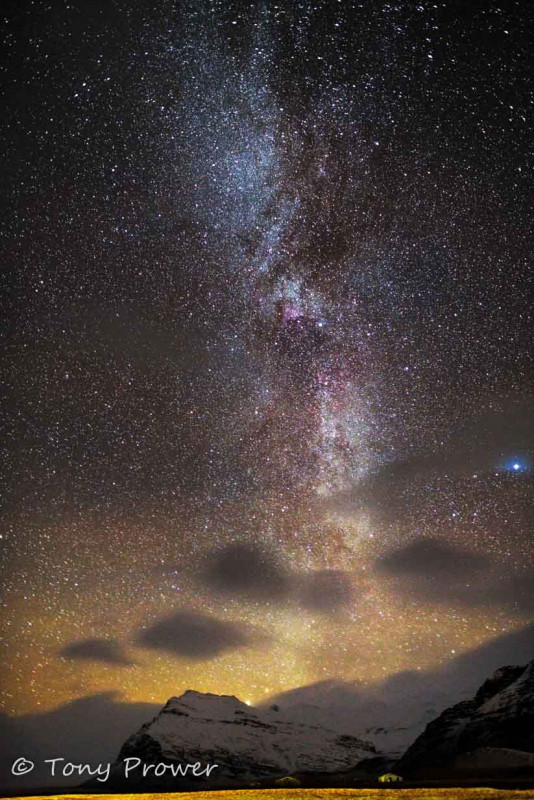
The nice thing about this shot was that I was actually able to see the stars in the live view for fine focus. The exposure simulation is a power horse behind Canon’s live view and a fairly indispensible tool (if it can do that!!). As for the lens, all stars suffer slightly with Coma and CA. Small finer stars are pleasingly sharp, but larger stars towards the corners of the frame are odd and need correction.
